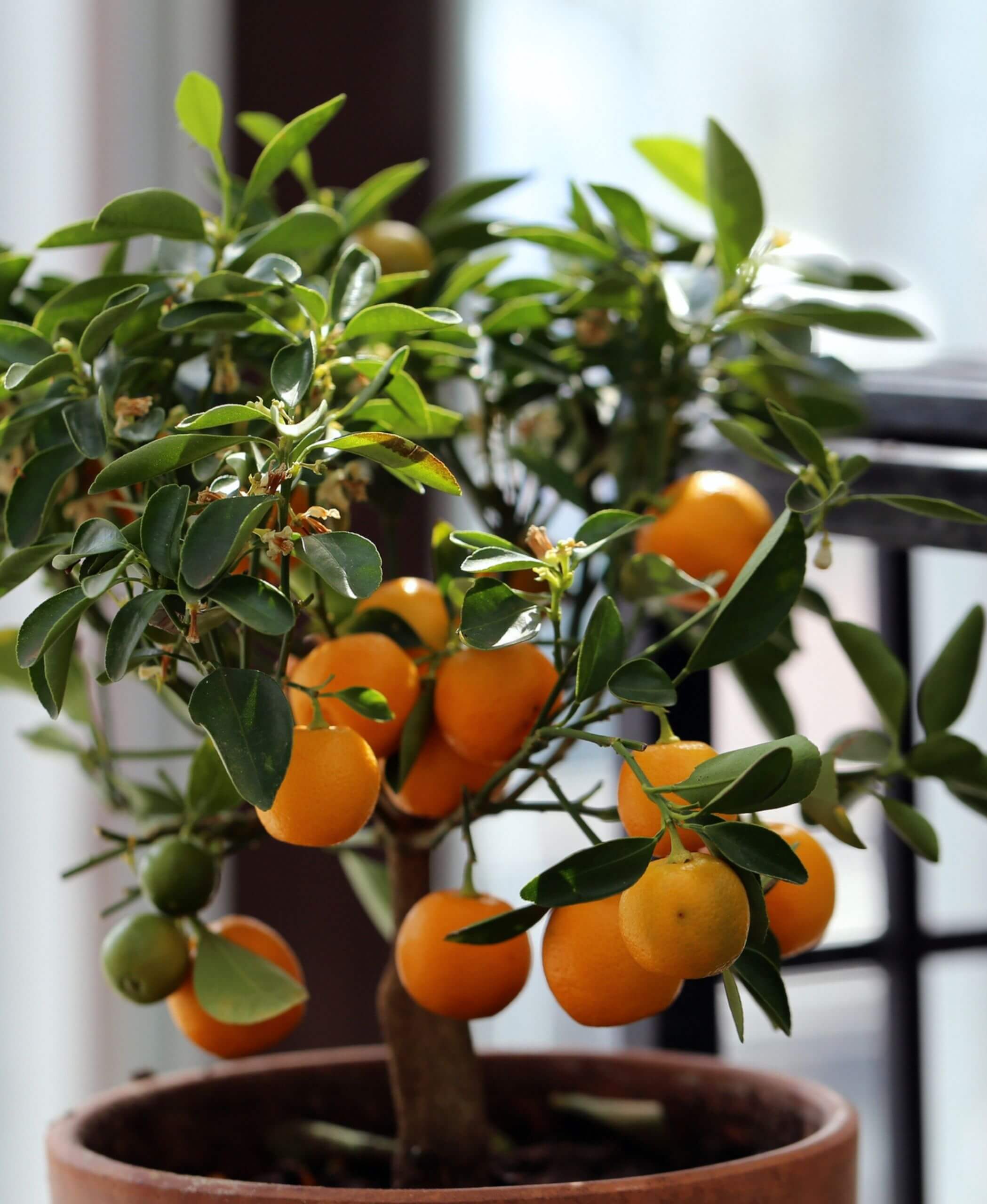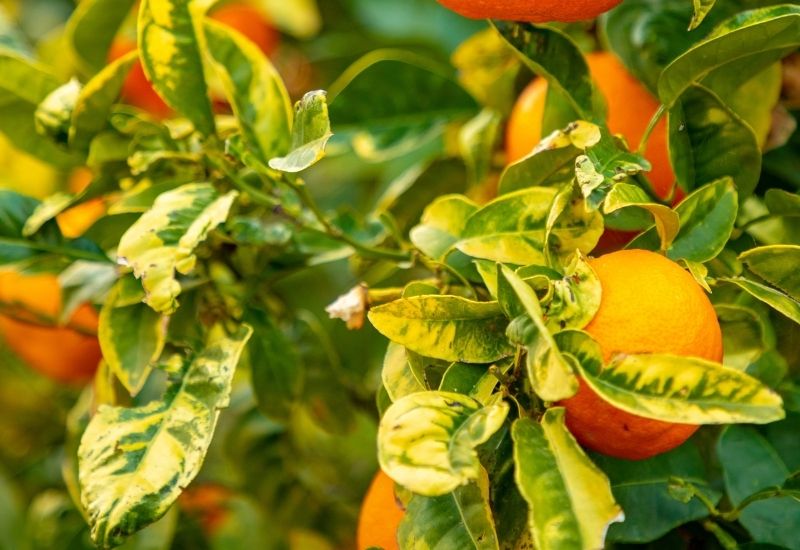Seeing yellow leaves on your prized orange tree can be worrying. But don’t panic – with the right troubleshooting, you can get your tree back to vibrant health. In this article we’ll explore the most common reasons behind yellowing orange tree foliage and give you tips to green up those leaves again.
Common Causes of Yellow Leaves on Orange Trees
There are a few key culprits that typically cause orange tree leaves to turn yellow:
-
Overwatering – Too much moisture in the soil leads to root rot and prevents nutrient uptake
-
Underwatering – Lack of water stresses the tree and soils can become deficient.
-
Nutrient deficiencies – Lack of nitrogen, iron, zinc, or magnesium leads to chlorosis.
-
Transplant shock – Damage to the root system when planting new trees.
-
Pests – Sap sucking insects like aphids drain leaves of nutrients.
-
Diseases – Fungal issues like root rot impair root function.
-
Seasonal leaf drop – Older leaves naturally yellow and shed as new growth emerges.
-
Environmental stress – Dramatic weather changes or temperature swings.
While many factors can contribute to yellowing, improper watering and nutrient deficiencies are the most common causes.
How to Fix Yellow Leaves on Orange Trees
If your orange tree has yellow leaves, take the following corrective steps:
Adjust Watering
-
Check soil moisture before watering. Only water when top few inches are dry.
-
Ensure soil drains well and isn’t waterlogged. Repot if needed.
-
Deep water tree thoroughly then allow soil to partially dry out before next watering.
-
Reduce watering frequency in winter and rainy seasons.
Fertilize with Key Nutrients
-
Test soil pH – optimum is 6.0-7.0. Adjust if needed.
-
Apply balanced citrus fertilizer monthly during growing season.
-
Look for key nutrients like nitrogen, zinc, iron, and magnesium.
-
Focus on quality organic fertilizers to build soil health.
-
Mulch around tree to retain moisture and add organic matter over time.
Check for Pests and Diseases
-
Inspect leaves and stems for signs of sap-sucking insects.
-
Treat any infestations found immediately and isolate tree.
-
Remove and destroy diseased plant parts and fallen leaves.
-
Improve air circulation and leaf canopy density with pruning.
Minimize Environmental Stress
-
Provide shade in intense afternoon sun and heat.
-
Cover young trees during cold snaps to protect from frost damage.
-
Allow citrus to gradually acclimate to any big weather shifts.
Rule Out Other Factors
-
Monitor for transplant shock in newly planted trees.
-
Consider natural leaf drop in older interior canopy leaves.
-
Review cultural practices like weed whacker damage.
Common Nutrient Deficiencies in Citrus Trees
Since nutrient issues are a prime suspect with yellowing leaves, let’s go over some of the most frequent deficiencies along with correction tips:
Nitrogen Deficiency
Symptoms: Uniform yellowing of older leaves first. Entire leaf yellows.
Who doesn’t love a good orange? Eat them, juice them, cook with them — they’re even sweeter when they’re the fruit of your own labor. That makes it all the more disappointing when the orange tree leaves turn yellow. If you are seeing yellowing leaves on your orange tree, here are some possible issues and how to fix them.

Are these older leaves?
If some of your tree’s leaves are yellow but there is still healthy new growth, it could just be old leaves falling off naturally. As soon as fruit trees come out of winter and the growing season starts up again, they will shed their old leaves to save energy for new growth. Moving your Orange Tree back outside in the spring when it gets more sunlight can also cause its leaves to turn yellow. This should ease quickly.
Could you be overwatering your orange tree?
Orange trees are sensitive to overwatering but also like to have their soil kept relatively moist—a fine balance. Roots can’t get nutrients when there is too much water in the soil. This can lead to root rot over time. Always make sure that at least 50% of the soil is dry before you water again, and make sure the tree is in a pot that drains well.
If you suspect overwatering might be the cause, dig around the roots to assess them. White roots are healthy, whereas brown or black roots that are slimy are suffering from rot. If so, you need to move the tree to a new pot and cut back any roots that are hurting.
Is your orange tree suffering from a nutritional deficiency?
Fruit trees demand a lot of nutrients, so it’s possible that your tree could have a nutrient deficiency. During the growing season in spring and summer give your tree some fertilizer once a month. To help your tree grow fruit, look for a citrus tree fertilizer or a high potassium fertilizer.
Does your orange tree have an insect problem?
If the yellowing on your leaves is developing in clustering spots, you might have a sap-sucking insect problem. Spider mites, scale bugs, and mealybugs are a few that can suck the nutrients out of your tree. If you see any of these pests, be sure to quarantine your plant and treat it immediately.
Are your CITRUS TREE LEAVES going yellow? What causes it and how do you fix it?
FAQ
Can yellow citrus leaves turn green again?
How do you fix yellow leaves on fruit trees?
Why are the leaves on my orange tree curling and turning yellow?
- The Ultimate Guide to Growing Strawberries in Raised Beds - August 8, 2025
- No-Dig Garden Beds: The Easiest Way to Grow a Beautiful Garden - August 6, 2025
- How to Protect and Preserve Wood for Raised Garden Beds - August 6, 2025

